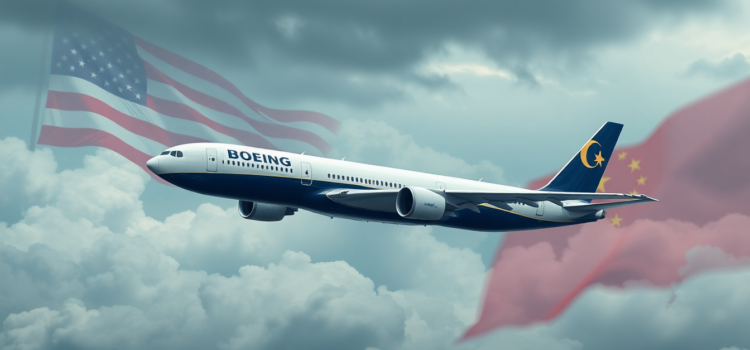
Boeing’s Aerospace Turbulence: Tariffs and Trade Surplus at Risk
Introduction
What do tariffs, a $136 billion aerospace trade surplus, and Chinese orders all have in common? They are all central to Boeing’s current economic turbulence. As America’s top exporter, Boeing stands at a critical junction where trade decisions could potentially redefine the future landscape of the aviation industry.
This article will dive into the complexities of Boeing’s current trade challenges due to tariffs, dissect the implications on America’s trade surplus, and explore how crucial Chinese orders hang in the balance. Join us as l unravel the most pressing issues stirring Boeing’s cockpit.
Tariffs: A Double-Edged Sword for Boeing
The introduction of tariffs poses a significant challenge to Boeing. On one hand, these economic measures seek to protect domestic industries, yet on the other, they threaten to increase costs for Boeing, disrupt supply chains, and potentially diminish international orders. The aerospace giant is caught in a delicate dance of balancing these financial burdens while striving to maintain its competitive edge in global markets.
The $136 Billion Aerospace Trade Surplus
The aerospace sector accounts for a significant portion of America’s trade surplus, valued at approximately $136 billion. Boeing’s business ventures are a key contributor to this surplus, given its extensive export portfolio. However, the threat of tariffs imposing additional costs or restricting trade routes has potential repercussions that could shrink this economic advantage.
Chinese Orders: A Critical Component
China stands as one of Boeing’s most substantial markets outside of the United States, with orders that form a significant portion of Boeing’s backlog. Tariff turbulence and trade tensions could jeopardize these valuable orders, as geopolitical strife intertwines with business relations. The resolution of these matters is imperative for preserving not just economic benefits but also strategic business partnerships with China.
Actions Boeing Must Consider
Boeing is not without recourse amidst these challenges. Several key strategies can be deployed:
- Engaging in diplomatic discussions to mitigate tariff impacts.
- Strengthening domestic operations to reduce reliance on foreign components.
- Exploring alternate markets to diversify risk.
Conclusion
The aviation industry’s landscape is as dynamic as its technological advancements. Boeing faces the arduous task of navigating the complexities of tariffs, trade surpluses, and international orders. By deploying strategic measures, Boeing can aim to stabilize its operations and continue to thrive as a pivotal player in the global economy.
Join the discussion: Comment below, subscribe to our newsletter, and stay informed with the latest industry insights.
FAQs
What are the current tariffs affecting Boeing?
Boeing is impacted by tariffs on aerospace components and materials, which can lead to increased costs and supply chain disruptions.
How significant is China to Boeing’s business?
China is a crucial market for Boeing, accounting for a substantial portion of its orders and contributing significantly to its growth and revenue.
What strategies can Boeing employ to mitigate tariff impact?
Boeing can engage in strategic diplomacy, enhance domestic production capabilities, and explore new markets to reduce its reliance on any single international market.










Comments